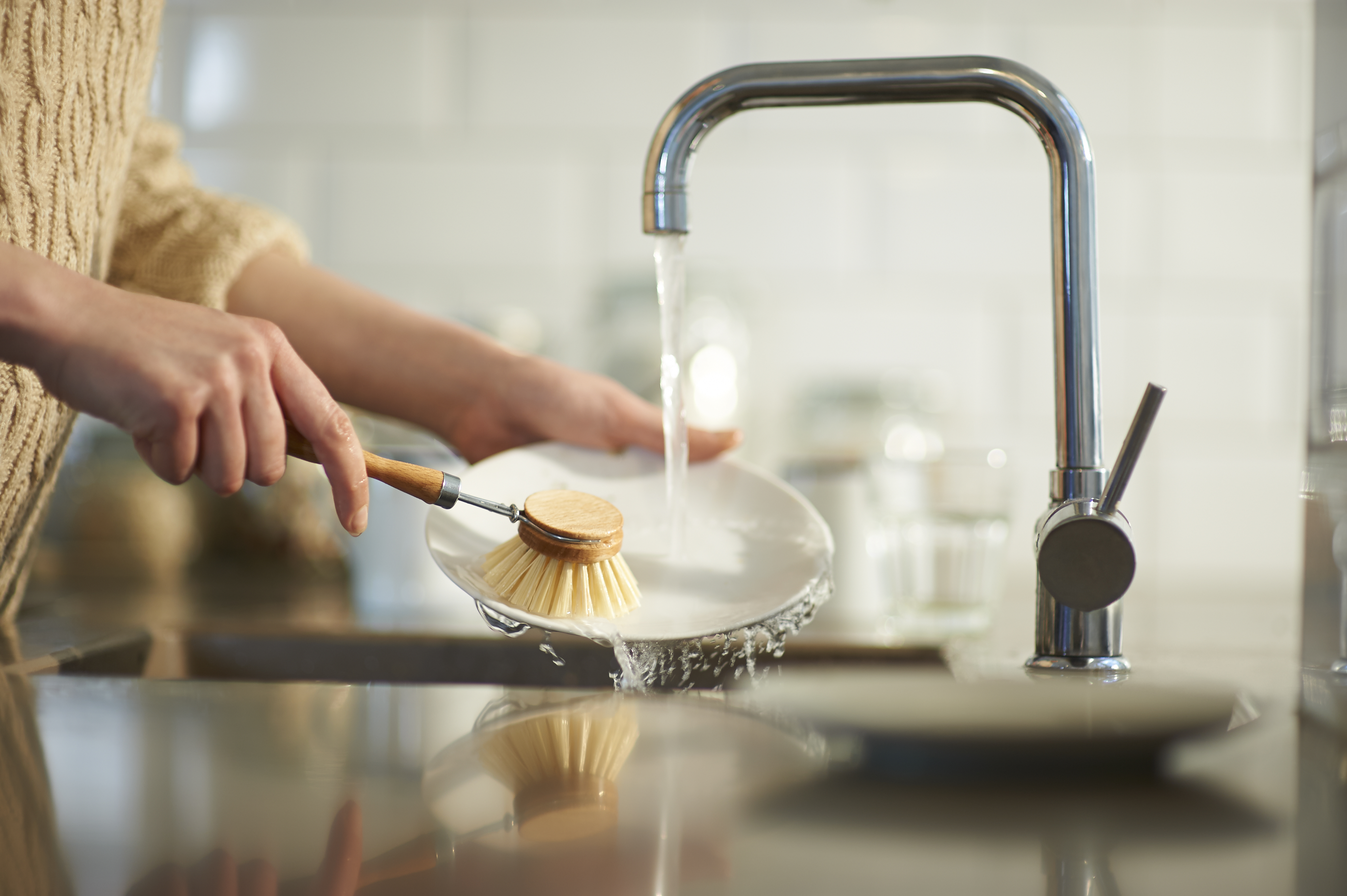

I’m the first to admit that I really do love the convenience of a dishwasher. I mean, who doesn’t? But in my new rental, there’s no space for one, so I’ve had to get used to washing the dishes by hand, taking me right back to my dorm room days once again.
I always thought of doing the dishes as being a seriously labor-intensive task but, actually, it's not that bad at all. In fact, if you remember to soak your pots beforehand, invest in a good scrubbing tool, and treat yourself to the right drying rack, it's a total cinch — and it only takes a few minutes to do.
Here’s what you’ll need
- A dish sponge
- Or a dish wand
- A container to place in the sink
- Dish soap, such as from Dawn
- A caddy for storing your sponge or brush
- A drying rack and drying mat
- Kitchen towels and dishwashing cloths
- A pair of rubber gloves
How to wash dishes by hand
1. Scrape food off of plates
Start by scraping all leftover food off of the plates and pots into the trash. Then place each item under running water to remove as much of the debris as possible. For anything that has stuck-on food that doesn’t want to budge, it’s a good idea to fill it with hot water and soak it for at least a few minutes. This should help loosen up any stubborn crust.
2. Fill the sink or separate container with warm water
You know how this part works: fill your plugged sink — or the bowl — with warm water and add a squirt or two of dish soap. Aim to get the water to a temperature that’s warm enough to make grease removal easier but without it being too hot to put your hands into. Ensure there are plenty of bubbles in the water, otherwise you may find it tricky to remove grease.
3. Put your dirty plates and crockery in the water
Once your sink or container is full, start adding some of the items that you want to wash, allowing them a minute or two to soak. If you have glasses and cutlery to wash, it’s a good idea to submerge these first, so the water is the cleanest for them. Followed by plates, mugs, and cooking utensils. Pots and pans should be done last because these tend to carry the most grease and grime.
4. Start scrubbing
Using a sponge, dish brush, or wand, gently scrub and wipe each item in the sink, carefully removing any remaining grease or debris. Ensure that you use a non-scratch sponge for anything with a non-stick coating, otherwise, you may scrub the coating off. Once each item has been cleaned, run it under warm water to remove any leftover soap and place it onto the draining board, dishwashing mat, or in the drying rack.
5. Allow your dishes to drip dry
Before you put your dishes away, it’s a good idea to leave things to drip dry for a few minutes, ensuring that any excess water flows onto the draining board.
6. Wipe your dishes dry
Once most of the water has dispersed from your clean dishes, take a dry kitchen towel or microfiber cloth and carefully dry up any remaining water droplets, before placing each item back in its respective cabinet or drawer.
7. Drain excess water and wipe down the area
Finally, pull the plug out of the sink or empty the basin, allowing the dirty water to drain away. Carefully scoop out any food debris so that the drain doesn’t become clogged. Once the water has drained, use a soft microfiber cloth to wipe the sink and draining board, drying up any water droplets to prevent any water stains from occurring.
Join our newsletter
Get small space home decor ideas, celeb inspiration, DIY tips and more, straight to your inbox!

Hi! I’m Beth Mahoney and I’m a former staff writer at Real Homes. I’ve been a journalist for the national press for the past six years, specializing in commerce and trends-related lifestyle articles, from product reviews and listicles to guides and features. With an eye for pretty things (think: quirky wall prints, scalloped edge furniture, and decadent-looking tableware) but a limited budget, I love nothing more than a bargain buy.